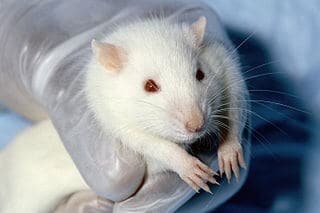Rett syndrome (RTT) is a neurodevelopmental disorder caused by mutations in the gene Methyl-CpG-Binding Protein 2 (MeCP2) on the X chromosome. Almost exclusively manifesting in young girls, RTT symptoms include regression of key psychomotor skills, such as hand gestures and purposeful use of the hands and legs, in addition to seizures and other intellectual and cognitive disabilities, such as autism, schizophrenia, attention deficit hyperactivity disorder and obsessive compulsive disorder.
Researchers at Baylor College of Medicine have developed a novel rat model to better understand what causes patients with RTT to lose these behavioral, cognitive and physical abilities. The study and its results were recently published in the Human Molecular Genetics journal, with Dr. Surabi Veeraragavan, instructor in molecular and human genetics and co-director of the Intellectual and Developmental Disabilities Research Center (IDDRC) Neurobehavior core at Baylor, as the lead author.
There is a known association with mutations in MeCP2, a master regulator protein, as the cause of the clinical problems in RTT. This relationship has been demonstrated and observed in mouse models for the last two decades, providing valuable insight into the cause and behavior of the disease. However, mouse models can be relatively limited in their ability to mimic the human condition.
In order to broaden the understanding of RTT on a molecular, behavioral and biochemical level, the team at Baylor looked to another rodent species – the rat.
“The mouse models alone may not be telling us what we need to know about behavioral impairments and molecular changes in RTT,” said Dr. Rodney Samaco, assistant professor and director of the IDDRC Neurobehavior core at Baylor, and lead for the research team from the Jan and Dan Duncan Neurological Research Institute (NRI) at Texas Children’s Hospital. “By performing studies with multiple species, we may increase our chances to develop effective drugs to treat neurobehavioral disorders.”
Once it was confirmed the rat model of RTT was missing the MeCP2 protein, the research team conducted tests focusing on two variables of behavior in the RTT rats, particularly in females, that were not previously observed in RTT mice; psychomotor regression and complex social interactions.
To test psychomotor regression, the rats were taught how to de-shell a handful of seeds. To start, it would take both RTT and normal rats roughly 100 seconds to complete the task. Over time, the normal rats learned to do this more and more quickly, while the time for RTT rats gradually increased, indicating a regression in the acquired psychomotor skill – a clinical trigger when diagnosing RTT in humans.
When testing the level of social interaction among RTT rats, the goal was to determine whether the animals displayed issues when faced with complex social situations. Researchers found that young female rats that lacked the MeCP2 protein were less engaged and less active in specific aspects of play when paired with a normal rat.
While rat modeling can reveal valuable insight into the behavioral elements of RTT, the combined approach of using both rat and mouse modeling can better predict the molecular and biochemical changes in the brains of RTT patients.
“This novel rat model allows a powerful cross-species approach that will change our tactic when designing pre-clinical trials, and we hope it will help expedite the discovery of an effective therapy,” said Samaco. “We realized that we learn far more by combining the two types of models, and it reflects more changes that occur in humans that we would not have seen had we focused on just one model or the other.”
Other contributors to this work include Ying-Wooi Wan, Daniel R Connolly, Christopher S Ward, Sirena Soriano, Meagan R Pitcher, Christopher M McGraw, Sharon G Huang, Lisa A Yuva, Agnes J Liang, Jeffrey L Neul, and Zhangdong Liu all with Baylor College of Medicine and Texas Children’s, Shannon M Hamilton, Jennie R Green, and Richard Paylor all with Baylor College of Medicine, and Dag H Yasui and Janine M LaSalle, both with the University of California Davis.
This research was funded by the International Rett Syndrome Research Foundation, Autism Speaks and the U.S. National Institutes of Health Grants DP5OD009134, R01HD062553, R01NS081913, R01HD079442 and U54HD083082.
If our reporting has informed or inspired you, please consider making a donation. Every contribution, no matter the size, empowers us to continue delivering accurate, engaging, and trustworthy science and medical news. Independent journalism requires time, effort, and resources—your support ensures we can keep uncovering the stories that matter most to you.
Join us in making knowledge accessible and impactful. Thank you for standing with us!

